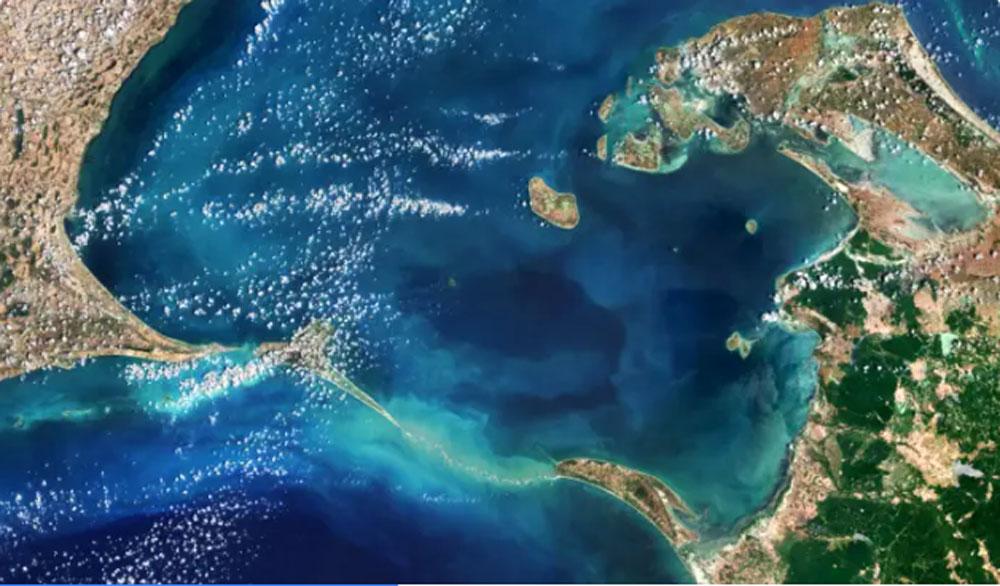Reply To:
Name - Reply Comment

The European Space Agency (ESA) has released a captivating image captured by its Copernicus Sentinel-2 satellite, offering a new perspective on the legendary Ram Setu, also known as Adam's Bridge.
This chain of limestone shoals, stretching 48 kilometers between Rameswaram Island in India and Mannar Island in Sri Lanka, has long been a subject of fascination. The ESA image provides stunning detail of the bridge's structure, sparking renewed interest in its geological history and cultural significance.
ESA’s image reveals a stark contrast between the deep blue waters of the Indian Ocean and the lighter hues marking the shallow regions around the Ram Setu. Here, the seabed dips to a depth of only 1 to 10 meters, suggesting a submerged landmass slowly revealing its secrets. Exposed sandbanks further bolster this theory.
The picture also highlights the bridge's ecological importance. Mannar Island on the Sri Lankan side boasts thriving ecosystems protected within a national park. The island itself is connected to mainland Sri Lanka by modern bridges.
Legends surrounding the Ram Setu claim it was built by Lord Rama, a revered Hindu deity, with the help of his monkey army. However, scientific evidence suggests a more natural origin story. Geologists believe the shoals are remnants of a landmass that once connected the Indian subcontinent to Sri Lanka.
Historical records seem to support this theory, indicating that the bridge was indeed a traversable land route until the 15th century, when powerful storms gradually submerged portions of the path.
On the Indian side, Rameswaram Island, also known as Pamban Island, beckons with its historic temples and vibrant culture. The 2-kilometer-long Pamban Bridge, a marvel of engineering, connects the island to the mainland.
The ESA's image offers a valuable tool for scientists and historians alike. By studying the intricate details of the Ram Setu, researchers can gain a deeper understanding of the region's geological history and the impact of environmental changes over time. The bridge also serves as a reminder of the rich cultural heritage shared by India and Sri Lanka.